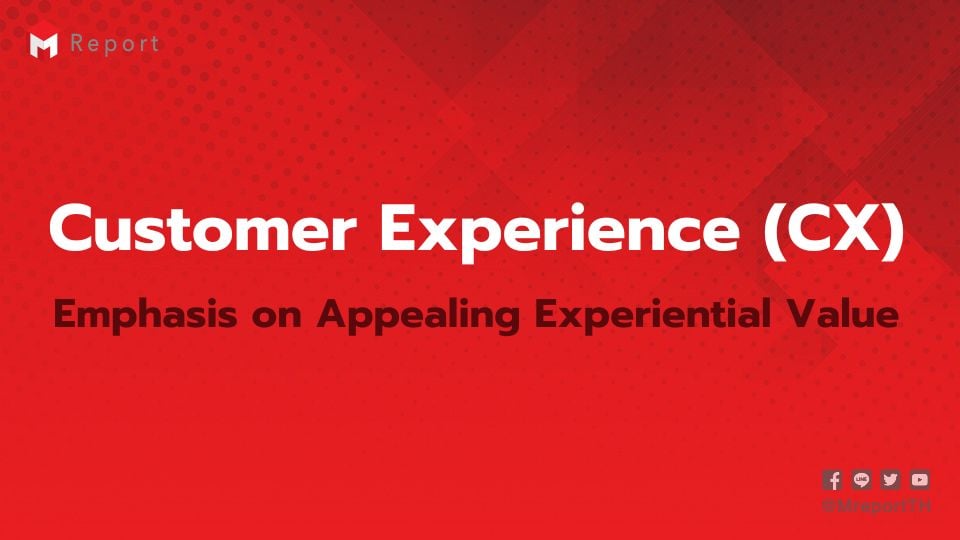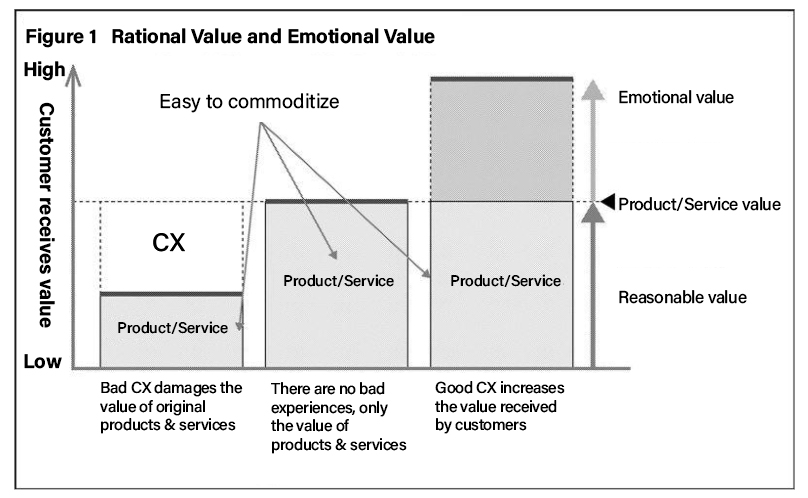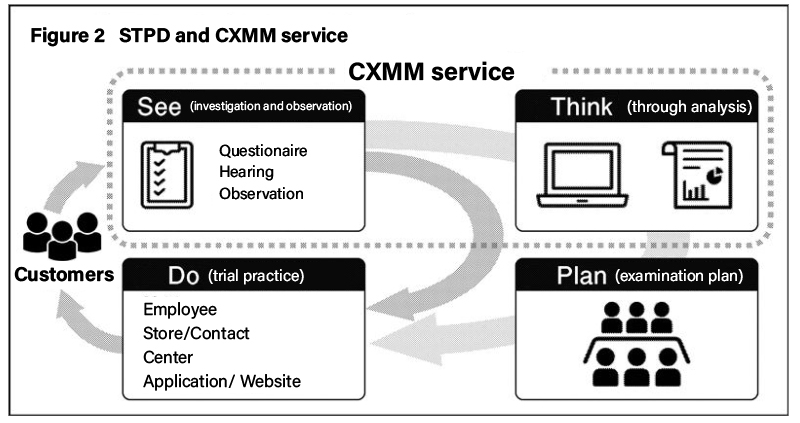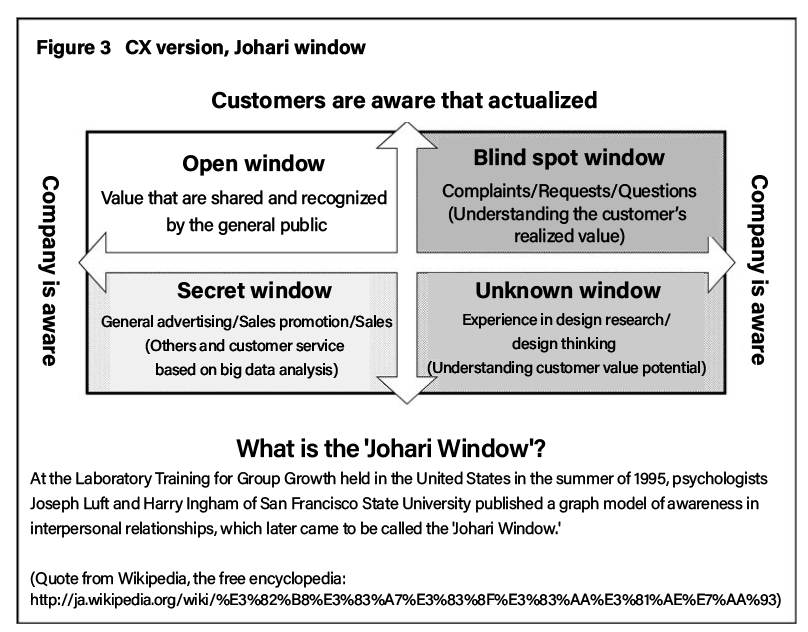
Customer Experience (CX): Emphasis on Appealing Experiential Value
Are you familiar with the team CX (customer experience)? CX refers to management and marketing that emphasizes not only the physical value of products and services, such as their functions, performance, and price but also the experiential value (emotional value) that customers experience before, during, and after purchase.
This is the concept of In a highly competitive industry where it is difficult to differentiate based on physical value alone, the concept of CX, which increases the overall value received by customers by adding emotional value to physical value, is extremely important. And does not lose its loyalty.
Japan, October 17, 2023 – Industry trends from the Nomura Research Institute (NRI) highlight the emphasis on Customer Experience (CX). Tatsuo Tanaka, a strategic expert in digital finance research, underscores the importance of CX in creating captivating experiences.
Gain customer loyalty
The concept of CX is starting to spread in Japan as well. CX is a concept of management strategy and marketing strategy that started to attract attention around 2000, and it refers not only to the “rational value” such as the functions, performance, and price of products and services but also to the customer’s purchasing process, usage process, Emphasis will be placed on promoting the value of the experience during the post-purchase follow-up process.
In a competitive industry, “rational value” such as functionality, performance, and price can easily become commoditized, making it difficult to differentiate products from the customer’s perspective. In contrast, the CX strategy increases the overall value received by customers and enables differentiation by adding “emotional value” to “rational value”

A typical example is the restaurant “Chef Mickey” at the Disney Ambassador Hotel at Tokyo Disney Resort. “Chef Mickey” is a popular service where you can interact with Disney characters such as Mickey Mouse and Donald Duck while eating. Although Chef Mickey’s prices are higher than other restaurants, it is still so popular that it is difficult to get a reservation. The reason for this is that there is an experience value that cannot be replaced by a high price.
In addition, action cameras such as GoPro and vacuum cleaners from Dyson can be said to be products that incorporate the concept of CX. Action cameras have increased their market share by providing emotional value in the form of an unprecedented “video experience” while offering lower functionality and performance than conventional digital cameras. “Dyson” is gaining market share with the concept of “experiential value” of a vacuum cleaner that does not require replacing the paper pack after cleaning and does not lose its suction. I noticed that all of them appealed to customer experience rather than functionality, performance, and price.
On the other hand, there is a “coffee maker with an emphasis on design” at a convenience store that is covered in stickers with instructions on how to use it, and a “home electronics store targeting outbound customers that closed after about a year” because it was located in a place where buses could not pass by. There are also many cases of failure. All of these seem to be the result of providing customers without being aware of the experiential value they expect.
What king of experience value leads to customer loyalty? Knowing this may be more important than improving value such as functionality and performance. This is also the most important process in promoting CX strategy
Strong correlation between CX indicators and profits
A common improvement cycle is “PDCA,” but when promoting a CX strategy, the “STPD” cycle is used. STPD is a cycle for creative activities advocated by the late Mr. Shigeru Kobayashi, who was the manager of Sony’s Atsugi factory practice. Their meanings are See (investigation and observation), Think (through analysis), Plan (examination plan), and Do (trial practice) In the case of PDCA, start with a Plan. Companies can plan as long as it has reasonable value such as functionality, performance, and price. However, in the CX strategy, it is not possible to suddenly create customer experience value that will lead to customer loyalty, so it is necessary to start with See (investigation and observation). Moreover, if correct investigation and observation cannot be carried out, there is a risk that all subsequent TPD activities will be off the mark.
There are many ways to research and observe customers, but they can be broadly divided into three: questionnaires, interviews, and observations. Among these, customer surveys, which can be measured quantitatively, play an important role in measuring current customer loyalty and verifying the results of Dos (trial and implementation). Charles Schwab, an American securities company, and some Japanese financial institutions use the results of customer surveys as indicators for employee evaluation. However, the customer loyalty metrics used in customer surveys must have a strong correlation with revenue. Customer satisfaction surveys that aim at satisfaction and do not care about the correlation with profits lead to managerial indifference and become paperwork
Some companies use NPS (Net Promoter Score) as an index to measure customer loyalty. The NPS asks people about their “likelihood of recommending it to others” on a scale of 0 (very low) to 10 (very high). Many (80% think this way about financial institutions). Even with NPS, if a strong correlation with revenue cannot be confirmed, it is insufficient as a customer loyalty indicator and may lead to paperwork.
In order to support the See and think of CX strategies, NRI provides the “CXMM Services” developed through joint research with Processor Kazuo Ichijo of Hitotsubashi University (Figure 2). The customer loyalty index uses a CX index that combines the three indicators of “continuation intention” “purchases intention” and “recommendation intention.” And employs an expectation disconfirmation model that asks for expectation and evaluations in response to a single question. It has already been confirmed that CX indicators have a strong correlation with financial institution’s profits. In other words, raising CX indicators will lead to higher profits, which will also increase the interest of management. I believe that CX indicators can be used in industries other than finance, but the important thing is to use indicators that have a strong correlation with corporate profits.

See, the most important processes
The expectation disconfirmation model also plays an important role in CX strategy. For example, it is difficult to imagine that people have the same expectations for luxury cars, light cars, and SUVs. The same applies to other industries and products. One aspect of CX's strategy is to acquire emotional value by exceeding customer expectations. In other words, a CX strategy cannot be established without knowing customer expectations. In a typical customer survey, evaluations (satisfaction) are collected, but expectations are not collected. The expectation disconfirmation model is indispensable in order to perform correctly See (investigation and observation) for the CX strategy. Other methods include interviews and observations, but these cannot be carried out overnight, so we recommend entrusting them to professionals in the field. Again, seeing is the most important process that determines the success or failure of a CX strategy, so seeing correctly is the minimum requirement.

The highest value of experience in the CX strategy is the “unknown window” of the CX version of the Johari window (figure 3). It is difficult to open this window through surveys and hearings alone. One rental car company uses behavioral observation techniques. However, just by observing behavior. It is not always possible to get hints to open unknown windows. When observing customer behavior, it is necessary to pay close attention not only to when a company actually interacts with customers, but also before and after, and even around the main flow line. In the case of a rental car company, by keeping an eye on the area around the main flow of traffic, new value that neither other companies nor customers noticed (for example, customers opening their trunks and changing clothes on the roadside, or children running around while doing so). After realizing that there were customers who were chasing after children, the company succeeded in providing changing rooms and childcare facilities and has been generating profits.
In recent years, there has been a wave of services in the world of manufacturing. If it is difficult to differentiate products based on their functions, performance, and price, it may be desirable in the future to differentiate products based on the value of customer experience in the process leading up to and after the sale.
#CX #CustomerExperience #CXStrategy #Innovation #Mreport #ข่าวอุตสาหกรรม
Source: Nikkan Kogyo Shimbun





.jpg)
